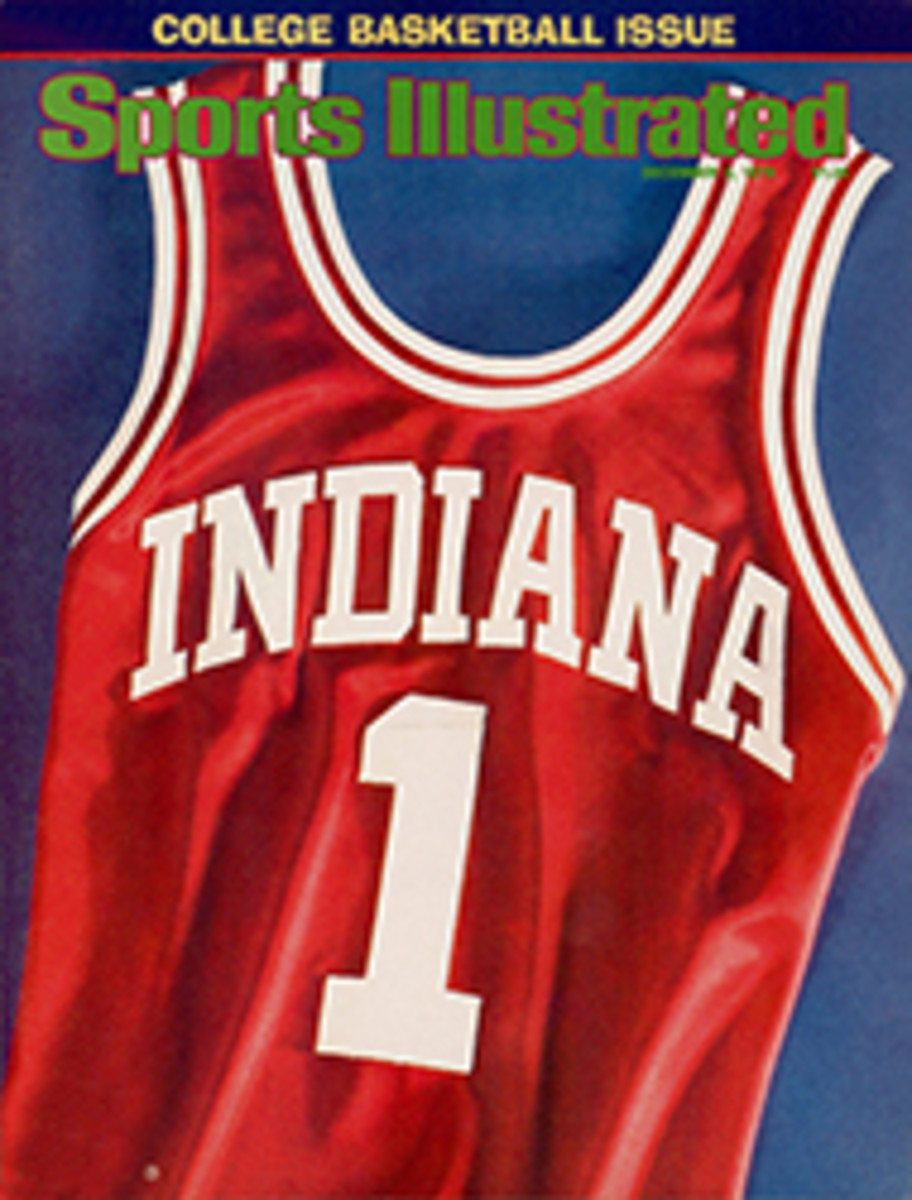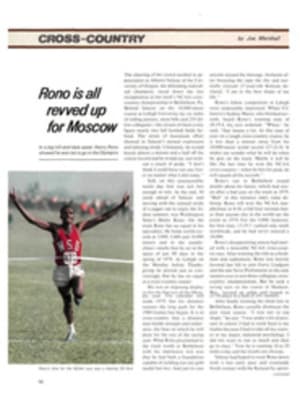
SCORECARD
BANNED
Two weeks ago, the Thoroughbred Board of the Maryland Racing Commission voted to ban the use of the drugs Butazolidin and Lasix at that state's tracks. The decision was made after six months of hearings and testimony before the five-member board and will become effective Jan. 1, 1980, when the winter race meeting opens at Bowie.
Butazolidin, or Bute, is an anti-inflammatory drug that reduces swelling, and in turn pain, particularly in an animal's joints. By using it, a trainer is able to run a horse more often. When properly employed, Lasix controls respiratory ailments and bleeding in the throat and nostrils, a condition sometimes encountered in racehorses. Use of Lasix has been legal at Maryland tracks since 1974; Bute has been allowed since 1975. The approvals were granted after horsemen convinced the racing commission that a permissive medication program was needed if horses were to meet the demands of year-round racing. Other states have since followed Maryland's lead.
But now many racing officials feel that abuses resulting from legalizing the drugs outweigh the benefits. At Pimlico in 1978, jockey Robert Pineda died of injuries suffered in a four-horse, chain-reaction spill that was triggered when a horse with a bad leg that had been treated with Bute stumbled. And although only one horse in 20 is a known bleeder, almost 75% of the horses running recently at Laurel were on the Lasix list that is posted daily. It seems that many trainers will give Lasix to their non-bleeders to discourage their being claimed. Lasix, a powerful diuretic, also can be used to camouflage other drugs that are not permitted, such as Sublimaze or Stadol, by producing such a volume of urine that testing for trace elements is virtually impossible.
"The intent of the medication program has been abused so much that it is hard to justify," says Robert W. Banning, chairman of the Maryland Thoroughbred Board. "The biggest industry cloud that we have comes around medication."
Predictably, not everyone was happy with the decision. Fendall Clagett, president of the Maryland, Delaware, Charles Town division of the Horsemen's Benevolent and Protective Association, called the board's action "intolerable" and said it would result in smaller fields and financial setbacks for Maryland racing.
"Abolishing medication may sound good, but it's naive and ignorant," said King T. Leatherbury, one of the nation's leading trainers, in testifying against the ban. "I could live without the Bute easier than without Lasix. If you have a horse that needs Bute, he might depreciate in value without it, and he may race less. But still you're in action. Whereas, you may have a $30,000 horse that really bleeds, and without the Lasix, that horse is going to be worth zero."
Dr. Thomas Tobin, a professor of veterinary medicine and toxicology at the University of Kentucky, told the commission that giving Bute to a horse is comparable to giving aspirin to humans. "The primary action of Bute is to block pain due to inflammation," he said. "But it does not block out pain entirely."
"If that's true," asked board member J. Neil McCardell, "then why is everybody so anxious to use it?"
The board's decison to ban the drugs was unanimous. Maryland now joins New York to become the only Eastern states to ban Bute and Lasix—New Jersey permits limited use of Lasix only—but Pennsylvania, West Virginia and Delaware are expected to soon follow suit.
One reason the racing commissions are taking action is a drug bill that U.S. Representative Bruce F. Vento (D., Minn.) hopes to introduce in January. Vento's legislation would establish federal minimum testing standards and would set civil and criminal penalties for violations, which are now handled internally by racing commissions. Vento has received considerable support for the bill, primarily from well-organized humane societies around the country.
Racetrack officials are strongly opposed to the ban of the drugs and to federal intervention. But it's clear they can't have it both ways. There is general agreement that there are abuses of Bute and Lasix, and unless action is taken by the racing commissions to ban these drugs, Washington seems certain to do so. As William Gross, one of Pennsylvania's racing commissioners, said last week, "Sure, we'll get a lot of flak, but it's time we start to bite the bullet. I wouldn't want to see the commissions being dictated to by the federal government."
ULTIMATE WEAPON
You probably thought that California lost to Baltimore in the American League playoffs because the Orioles played better ball. Not so, according to a letter we received from John Robertson of Camarillo, Calif. It wasn't the hitting or the pitching—but the singing that did the Angels in. Robertson is a voice and piano teacher whose principal hobby is singing The Star-Spangled Banner before pro baseball, football, basketball and hockey games. Because Robertson, a tenor, lives just northwest of Los Angeles, most of his appearances are in Southern California.
"In the last 6½ years I've sung our national anthem 86 times for the Dodgers, Angels, Lakers, Kings, Southern California Sun (WFL) and Aztecs," writes Robertson. "I can sing the anthem in seven keys. When I sing in the four lower keys, I'm 60% wins. But in the three highest keys, B to D flat, I'm 95%, with 58 wins and three losses; I'm 37-2, or 95%, in my highest key. I sang at The Forum 20 times last season, 10 for the Lakers and 10 for the Kings, and never lost.
"...I have sung for the Dodgers for six years.... In 1977 the Dodgers lost two World Series home games with celebrity singers. If I had been allowed to sing for one of those games, there probably would have been a seventh game back in New York.
"...I have been singing for the Angels five years and I asked if I could sing in one playoff game. They owed me that on my seniority alone, but I also told them of my winning record in detail. They weren't impressed and said, 'Sorry.' Well, you know what happened in the last playoff game with their backs to the wall. They had pulled out all their stops—except one."
Rejected at home, Robertson then offered his victorious voice to Baltimore Manager Earl Weaver as the "ultimate weapon" against the Pirates in the World Series. Weaver never wrote back. Well, you know what happened in the last Series game. And now you know why.
SOUR GEORGIA BROWN
Something unfunny has happened to the Harlem Globetrotters. They have released one of their most celebrated performers, Marques Haynes, who says he was dropped because of his activities as president of the union representing Globetrotter players, the United Basketball Players Association. According to an unfair-labor-practice charge filed with the National Labor Relations Board, the Globetrotters have discharged three other players who were active in the union—John Smith, Ronald Cole and Alan Cunningham. Haynes accuses club management of attempting to interfere with and weaken the union.
The Globetrotters were previously racked by labor problems in 1971 when team members struck for three weeks for higher pay and better traveling conditions. Haynes wasn't with the organization at the time. He had joined the Globetrotters in 1946 and had become famous as the team's dribbling specialist, but quit in 1953 to form his own comedy-basketball troupe, the Fabulous Magicians. He returned to the Trotters in 1972 and was elected president of the union when it won NLRB certification in 1974.
Haynes admits that conditions on the Trotters have improved since the '71 strike. But, he says, the average salary of the 20 players who make up the team's two touring troupes is $37,000 for a six-month, 200-game schedule, far below the $130,000 average for NBA Players, who have 82 games over six months. Haynes says that when he tried to raise grievances about salaries and other issues, management began pressuring his teammates to avoid him. As a result, he says, "Some of them were so scared that if I walked into the room, they wouldn't look at me. These were my best friends, people I'd been playing with for years. Sometimes they would call me late from pay phones because they thought they were being observed." Herbert Levine, a lawyer representing Metromedia, Inc., which has owned the Globetrotters since 1976 said he would not comment on Haynes' charges while the NLRB complaint was still pending.
MR. RODGERS' NEIGHBORHOOD
On Thanksgiving Day, marathoner Bill Rodgers helped promote the five-mile Manchester (Conn.) Turkey Trot by running stride for stride with Denis Mullane, president of the Connecticut Mutual Life Insurance Company, a sponsor of the event, all proceeds from which went to muscular-dystrophy research. Mullane and Rodgers crossed the finish line together, in 46 minutes.
At a postrace party, another runner, Judy Krupp of Manchester, was talking to some finishers, including Rodgers, about the race, which she had completed in 40:20.
"And what was your time?" she asked Rodgers.
"Forty-six minutes," he replied.
"Well, I think you should be proud just to have finished," she said to console him. "Five miles is a long way, if you're not used to it."
THE FISHBOWL STATE
Vacationers and retirees aren't the only exotic creatures who find south Florida's subtropical climate inviting. So do growing numbers of alien species that are turning the area into a veritable United Nations of the animal kingdom. Cuban Treefrogs, which are believed to have arrived as stowaways on banana boats, inhabit Miami's tallest buildings, and a number of imported pets have found their way into the wild, including myna birds from Asia and South American parakeets, both of which have formed breeding colonies in Coral Gables. Similarly, the tilapia fish from Africa started out in fish tanks, but apparently some owners turned them loose; they now dwell in Miami's sprawling canal system, where they are multiplying with startling rapidity. So many other fish have followed the same route that Tamir Ellis, a University of Miami biologist, recently told The Miami Herald that Dade County was becoming "a kind of fishbowl for exotic species."
Florida also abounds in new reptiles, including South American iguanas that can attain a length of six feet and have taken up residence in southern Dade County, and Cuban anoles with green skin that cling with their tails to Southern Bell's telephone lines. Tokay geckos, Asian lizards with purplish heads and orange spots, skitter across ceilings of Miami homes at night, emitting shrill cries. Even more disconcerting are the city's increasingly abundant South American caimans, which were sold a few years ago as cute, inexpensive pets to people who ended up releasing them into local waterways when they realized that caimans are one of the fiercest of crocodilians. Almost 100 of the menacing creatures were recently removed from drainage ditches at Homestead Air Force Base.
Naturalists say there is no reason to believe the influx of foreign fauna is temporary. On the contrary, Florida's new species are merely following the example of a hardy, adaptable—and irksome—bird that arrived in the U.S. from England a little over a century ago and has done very well here, thank you: the house sparrow.
ILLUSTRATION
THEY SAID IT
•Garo Yepremian, New Orleans Saint kicker, after deciding against a $10,000 hair transplant: "The thing that really bothers me is that there are already so many Elvis Presley look-alikes."
•Dan Pastorini, Houston Oiler quarterback, on what it's like to hand off to Earl Campbell: "Comforting."
•Floyd Smith, NHL Toronto Maple Leaf coach, after his team was tied by the Edmonton Oilers: "I have nothing to say, and I'm only going to say it once."
•Lee Trevino: "There are two things not long for this world—dogs that chase cars and pro golfers who chip for pars."

